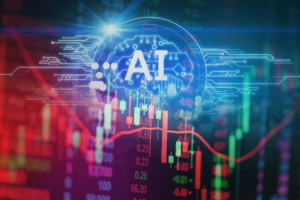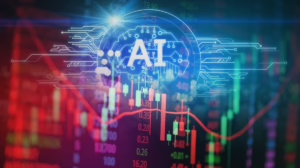AI Explained: A Comprehensive Guide to the Meaning of Artificial Intelligence
Introduction to Artificial Intelligence
Artificial Intelligence (AI) is a term that has infiltrated various sectors of society, from business to healthcare, and even social interactions. While many individuals have a basic understanding of what AI entails, it’s often marred by misconceptions and overly technical jargon. This comprehensive guide aims to demystify AI—providing definitions, explanations of types and applications, as well as ethical considerations and future trends.
Defining Artificial Intelligence
In its simplest form, artificial intelligence refers to the capability of a machine to imitate intelligent human behavior. It encompasses various subfields, including machine learning, natural language processing, robotics, and computer vision. The field is vast, and AI systems can vary dramatically from simple algorithms to complex neural networks that learn and adapt.
A Brief History of AI
The concept of AI dates back to ancient history, but the formal study began in the mid-20th century. Pioneers like Alan Turing laid the groundwork with the Turing Test, which evaluates a machine’s ability to exhibit intelligent behavior indistinguishable from that of a human. The Dartmouth Conference in 1956 marked the birth of AI as a discipline, where researchers began formalizing theories and methods; however, the field has experienced peaks and troughs—often termed “AI winters”—when funding and interest waned.
Key Concepts in AI
-
Machine Learning (ML): A subset of AI that focuses on the idea that systems can learn from data, identify patterns, and make decisions with minimal human intervention. ML is responsible for many of the advancements we see in AI today.
-
Deep Learning: A branch of ML that uses neural networks with many layers (hence “deep”) to analyze various factors contributing to a decision. This approach has been particularly effective in areas like image and speech recognition.
-
Natural Language Processing (NLP): This area involves the interaction between computers and humans using natural language, enabling machines to understand, interpret, and respond to human language in a valuable manner.
-
Computer Vision: Enabling machines to interpret and make decisions based on visual inputs from the world, computer vision allows AI systems to recognize and process images and videos.
-
Robotics: The intersection of AI and robotics entails creating intelligent machines that can perform tasks in the physical world, from assembly lines to autonomous vehicles.
Types of AI
Understanding the different types of AI can provide greater insight into its applications and future potential.
Narrow AI vs. General AI
-
Narrow AI (Weak AI): This type refers to AI systems that are designed and trained for a specific task. Examples include virtual assistants like Siri, recommendation systems on Netflix, or spam filters in email. Narrow AI does not possess consciousness or genuine understanding; it simply executes predefined tasks.
-
General AI (Strong AI): Although still largely theoretical, this type refers to a machine’s ability to understand, learn, and apply knowledge across a variety of tasks—much like a human. Unlike narrow AI, general AI can adapt to new situations, exhibit cognitive abilities, and potentially exhibit consciousness and understanding.
Reactive Machines vs. Limited Memory vs. Theory of Mind vs. Self-Aware AI
-
Reactive Machines: These are the most basic type of AI systems that respond only to present inputs. They do not have the ability to form memories or use past experiences.
-
Limited Memory: These machines can look into the past to make decisions. Though significantly more advanced than reactive machines, they still operate within a restricted domain and lack the ability for long-term learning.
-
Theory of Mind: This conceptual phase involves machines recognizing human emotions, beliefs, and thoughts. Developing AI that can perceive and understand human emotional states is a complex task that remains largely in research.
-
Self-Aware AI: This is still a theoretical construct. Such machines would have consciousness and self-awareness, reflecting their understanding of their existence and environment. They could exhibit human-like emotions and thoughts.
Applications of AI
Healthcare
AI is revolutionizing healthcare through predictive analytics, diagnostics, and personalized medicine. Machine learning algorithms analyze medical data faster than human professionals, allowing for quicker diagnoses and treatment plans. AI-driven chatbots serve as preliminary health advisors, answering patient queries 24/7.
Business and Finance
Robotic Process Automation (RPA) leverages AI to automate repetitive tasks, freeing up human resources for more complex responsibilities. In finance, algorithms detect fraudulent transactions in real-time, while AI-based trading systems execute transactions based on predictive models of market behavior.
Transportation
Autonomous vehicles are perhaps one of the most talked-about applications of AI. Companies like Tesla and Waymo are at the forefront, utilizing computer vision, sensors, and machine learning to develop self-driving cars. AI is expected to improve road safety, optimize traffic flow, and reduce accidents.
Education
AI is facilitating personalized learning experiences in educational settings. Learning platforms utilize AI to tailor courses based on individual student performance, offering additional resources to those who need help, while challenging those who excel.
Entertainment and Media
AI-driven recommendation systems analyze user preferences and behavior, tailoring content suggestions in streaming services like Spotify and Netflix. By understanding taste patterns, AI enriches user engagement and retention.
Manufacturing and Robotics
In manufacturing, AI enhances efficiency and quality control. Robots equipped with AI can analyze production lines for defects, manage inventory, and even collaborate with human workers to optimize output.
Ethical Considerations
As AI continues to evolve, it brings a host of ethical considerations. The questions surrounding bias in algorithms, job displacement, and privacy are increasingly becoming focal points of debate.
Bias in AI
AI can perpetuate or even exacerbate societal biases if the algorithms are trained on biased data sets. For instance, facial recognition technology has shown varying degrees of accuracy across different demographic groups. It’s crucial to ensure that training data is representative to prevent discrimination.
Job Displacement
Automation poses a legitimate threat to jobs in various sectors. While AI is expected to create new jobs, there is a growing concern over the short-term impact on employment. Industries need to strike a balance between technological advancement and job security, actively reskilling their workforce.
Privacy and Surveillance
AI-driven technologies in surveillance raise questions regarding privacy and individual rights. Governments and organizations must establish regulatory frameworks to protect citizens while leveraging AI capabilities.
The Future of AI
The future of AI promises both excitement and uncertainty. Advances in general AI make it crucial to navigate not only technological boundaries but also ethical dilemmas.
Innovations on the Horizon
Research is ongoing in areas like quantum computing, which could further enhance AI capabilities. As algorithms become more sophisticated, we may witness the emergence of AI that can not only learn from data but also create new forms of content, like art and music.
Collaboration Between Humans and AI
The future likely holds an integrated approach where humans and AI collaborate, combining human intuition and empathy with machine efficiency and data processing. This symbiotic relationship has the potential to drive innovation and improve various facets of life.
Regulation and Governance
As AI technology continues to penetrate daily life, the need for robust governance frameworks becomes necessary. Policymakers must engage with AI researchers and technologists to ensure that regulations foster innovation while protecting public interests.
Conclusion
Artificial Intelligence is no longer a far-off concept—it’s actively shaping our world today. Understanding the meaning, capabilities, and ethical implications of AI is vital for navigating the complexities of the future. As developments continue, staying informed will empower individuals and organizations to engage responsibly with this transformative technology.
References
- Russell, S., & Norvig, P. (2020). Artificial Intelligence: A Modern Approach. Pearson.
- Bostrom, N. (2014). Superintelligence: Paths, Dangers, Strategies. Oxford University Press.
- Domingos, P. (2015). The Master Algorithm: How the Quest for the Ultimate Learning Machine Will Remake Our World. Basic Books.
- Tegmark, M. (2017). Life 3.0: Being Human in the Age of Artificial Intelligence. Alfred A. Knopf.
- Goodfellow, I., Bengio, Y., & Courville, A. (2016). Deep Learning. MIT Press.
This article provides a comprehensive overview of the meaning, applications, and implications of AI, setting the stage for deeper discussions on the future of this transformative field.


























Add Comment